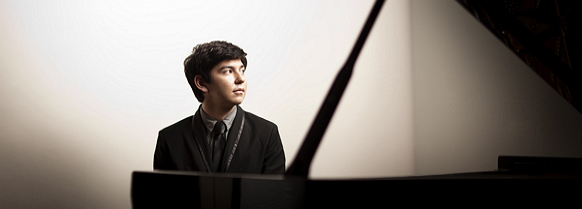Tag: Schubert Impromptus
-

PROGRAM NOTES: CHARLIE ALBRIGHT
Franz Schubert Impromptus Op. 90, Nos. 1-4 The impromptu is just one of a number of small-scale instrumental genres arising in the early 19th century, known under the collective title of “character pieces”. Cultivated by composers of the Romantic era, these pieces present a simple musical idea in an intimate lyrical style with the…
-

PROGRAM NOTES: BEHZOD ABDURAIMOV
Ludwig van Beethoven: Sonata in A flat, Op. 26 Beethoven begins to move away from the norms of the classical tradition in this unconventional four-movement sonata without a single movement in traditional sonata- allegro form. It opens with a noble, almost ceremonial theme with five variations, all based, to some degree, on the principle of rhythmic…

